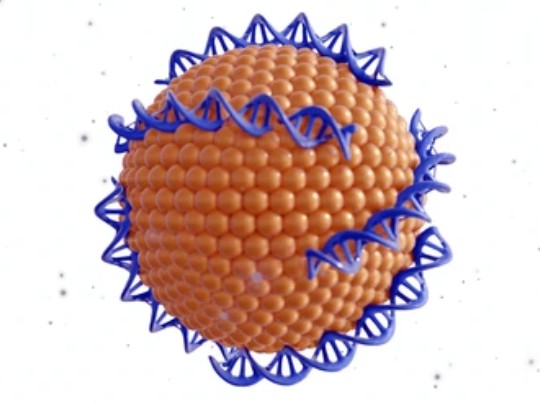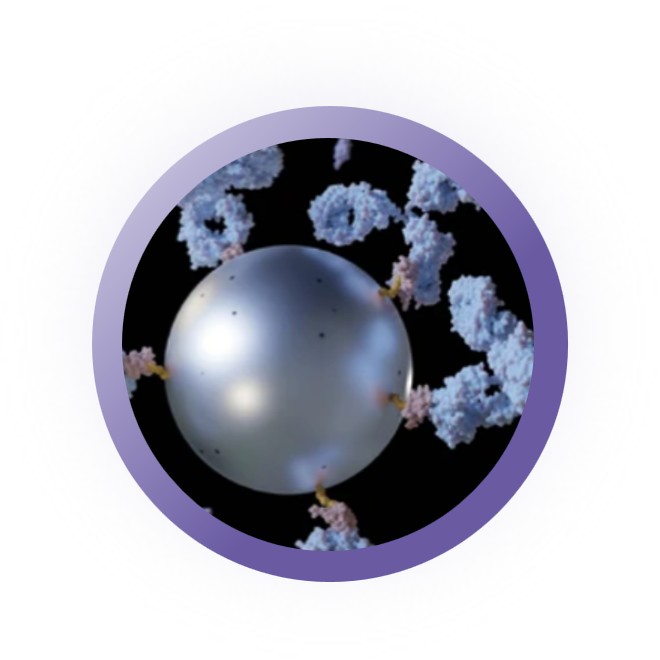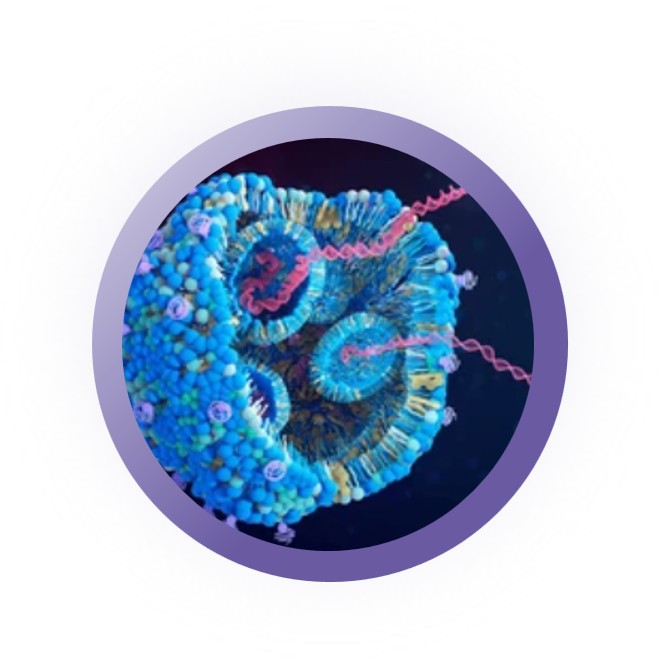- Home
-
Products
- Magnetic Ionic Liquid
-
Magnetic Beads
- Streptavidin Magnetic Beads
- Aldehyde Magnetic Beads
- Alkynyl Magnetic Beads
- Amino Magnetic Beads
- Avidin Magnetic Bead
- Azide Magnetic Beads
- Carboxyl Magnetic Beads
- DEAE Magnetic Beads
- Epoxy Magnetic Beads
- Heparin Magnetic Beads
- Hydroxyl Magnetic Beads
- NHS Magnetic Beads
- Phenyl Magnetic Beads
- Protein Magnetic Beads
- Silica Magnetic Beads
- Silicon Magnetic Beads
- Thiol Magnetic Beads
- Tosyl Magnetic Beads
- Magnetic Nanodispersion
- Ferrite Magnetic Nanopowder
- High-Purity Magnetic Nanomaterials
- Magnetic Polystyrene Microspheres
- Magnetic Bead Kit
- Magnetic Iron Oxide Nanocrystals
-
Magnetic Nanoparticles
- Amino-Functionalized Magnetic Nanoparticles
- Carboxyl-Functionalized Magnetic Nanoparticles
- Epoxy-Functionalized Magnetic Nanoparticles
- Hydrophobic Magnetic Nanoparticles
- IDA-Functionalized Magnetic Nanoparticles
- Magnetic Fe2O3 Nanoparticles
- Magnetic Fe3O4 Nanoparticles
- PEI Magnetic Nanoparticles
- PVA Magnetic Nanoparticles
- Silanol-Functionalized Magnetic Nanoparticles
- Urea Formaldehyde Magnetic Nanoparticles
- PAMAM Magnetic Nanoparticles
- Protein A Magnetic Nanoparticles
- Protein G Magnetic Nanoparticles
- Streptavidin Magnetic Nanoparticles
- Magnetic Silica Microspheres
-
Services
- Biomagnetic Material
- Magnetic Hydrogel Services
- Rare Earth Magnetic Materials Services
- Magnetic Ionic Liquid Services
- Magnetic Nanomaterials Services
- Magnetic Activated Carbon Service
- Molecular Magnetic Materials Services
- Magnetic Compounds Services
-
Custom Magnetic Beads Services
-
Biofunctionalized Magnetic Bead Services
- Magnetic Bead Protein Conjugation Services
- Magnetic Bead Antibody Conjugation Services
- Magnetic Bead Aptamer Conjugation Services
- Magnetic Bead Carbohydrate Conjugation Services
- Magnetic Bead Nucleic Acid Conjugation Services
- Magnetic Bead Drug Conjugation Services
- Magnetic Bead Enzyme Conjugation Services
- Magnetic Bead Metal Conjugation Services
- Magnetic Bead Multifunctional Composite Conjugation Services
- Magnetic Bean Affinity Tag Conjugation Services
- Magnetic Bead Affinity Ligand Conjugation Services
- Magnetic Bead Antigen Conjugation Services
- Magnetic Bead Fluorescent Material Conjugation Services
- Magnetic Bead Multiplex Conjugation Services
- Magnetic Bead Stimulus-Responsive Modification Services
- Magnetic Bead Enzyme-Responsive Modification Services
- Magnetic Bead Peptide Conjugation Services
- Magnetic Beads Glycolipid Conjugation Services
- Magnetic Beads Glycoprotein Conjugation Services
- Magnetic Bead Fluorescent Dye Conjugation Services
- Custom Magnetic Bead Synthesis
-
High-Performance Magnetic Beads Service
- Exosome Magnetic Bead Services
- High Affinity Magnetic Bead Service
- Immobilized Enzyme Magnetic Bead Services
- Low Non-Specific Adsorption Magnetic Bead Service
- Magnetic Bead Microfluidics Services
- Multimodal Magnetic Bead Services
- Protein Crystallization Magnetic Bead Services
- Ultra-Fast Responsive Magnetic Bead Services
- High-Stability Magnetic Bead Services
- Automated Magnetic Bead Processing Service
- Biocompatible Magnetic Bead Design Service
- Cell Sorting Magnetic Bead Design Service
- High Performance Magnetic Bead Characterization Service
- High-Sensitivity Biomarker Magnetic Bead Service
- Immune Enrichment Magnetic Bead Service
- Magnetic Bead GMP Production Service
- Molecular Diagnostics Magnetic Bead Service
- Nucleic Acid Extraction Magnetic Bead Design Service
- Protein Purification Magnetic Bead Design Service
- Protein Purification Magnetic Bead Service
-
Biofunctionalized Magnetic Bead Services
-
Nanomedicine Service
-
New Nanoparticle Design Services
- Complex Nanoparticle Design
- Nanoparticle Scalability Testing Service
- Polymer Nanoparticle Design Services
- Biobased Nanoparticles Design Service
- Gold Nanomaterials Design Service
- Metallic Nanoparticles Design Service
- Magnetite Nanoparticle Design Service
- Semiconductor Nanoparticles Design Service
- Titanium Dioxide Nanoparticles Design Service
- Metal Oxide Nanoparticles Design Service
- Silica Nanomaterials Design Service
- Carbon-Based Nanoparticles Design Service
- Nanomedicine CDMO Services
- Custom Nanoparticle Development and Manufacturing for Diagnostics
- Custom Nanoparticles Synthesis
- Nanoparticle Characterization Service
-
New Nanoparticle Design Services
-
Magnetic Beads Separation & Purification Services
- Antigen Sorting Magnetic Bead Service
- Clinical Sample Testing Magnetic Bead Service
- Environmental detection Magnetic Bead Service
- Food Testing Magnetic Bead Service
- Protein Sorting Magnetic Bead Service
- Serum Testing Magnetic Bead Service
- Virus Particle Enrichment Magnetic Bead Service
- Pollutant Detection Magnetic Bead Service
-
Magnetic Beads QC & Validation Services
- Magnetic Bead Activity Verification Service
- Magnetic Bead Adsorption Capacity Evaluation Service
- Magnetic Bead Binding Capacity Testing Service
- Magnetic Bead Biocompatibility Analysis Service
- Magnetic Bead Conjugation Efficiency Detection Service
- Magnetic Bead Consistency Validation
- Magnetic Bead Imaging Analysis Service
- Magnetic Bead Magnetic Response Speed Testing Service
- Magnetic Beads Particle Size Distribution Analysis Service
- Magnetic Bead Magnetic Detection Service
- Magnetic Bead Magnetic Strength Testing Service
- Magnetic Bead Morphology Analysis Service
- Magnetic Bead Stability Assessment Service
-
Magnetic Beads Application Development Services
- Magnetic Bead ELISA Platform Development Service
- Magnetic Bead Microfluidic Platform Development Service
- Molecular Diagnosis and Nucleic Acid Platform Development Services
- Nucleic Acid Probe Screening Magnetic Beads Service
- Magnetic Bead High-Throughput Drug Screening Platform Development
- Magnetic Bead Assisted Single-Cell Sorting Platform Development
- Magnetic Bead Based Environmental Pollutant Detection Platform Development
- Magnetic Bead Bubble Separation Platform Development
- Magnetic Bead Clinical Biochemical Index Detection Platform Development
- Magnetic Bead Coupled Vaccine Delivery System Platform Development
- Magnetic Bead Disease Marker Screening Platform Development
- Magnetic Bead Enhanced Chemiluminescence (ClLA) Detection Platform Development
- Magnetic Bead Environment Microbial Research Platform Development
- Magnetic Bead Food Microbial Detection Platform Development
- Magnetic Bead Gene Editing Verification Platform Development
- Magnetic Bead Heavy Metal Detection Platform Development
- Magnetic Bead Inflammatory Marker Detection Platform Development
- Magnetic Bead Liquid Biopsy Platform Development
- Magnetic Bead Pesticide Residue Detection Platform Development
- Magnetic Bead Stem Cell Differentiation Research Platform Development
- Magnetic Bead Stem Cell Screening Platform Development
- Magnetic Bead Tumor Single-Cell Sequencing Platform Development
- Magnetic Bead Virus Vector Purification Platform Development
- Magnetic Bead-Based Foodborne Pathogen Detection Platform Development
- Magnetic Bead Infectious Disease Diagnosis Platform Development
- Magnetic Bead-Based Western Blot Assistance Platform Development
-
Advanced Magnetic Materials Services
- Custom Magnetic Carbon Material Services
-
Magnetic Ionic Liquids and Functional Compounds Service
- Magnetic Compounds Development Services
- Magnetic Ionic Liquid Technology Services
- Magnetic Ionic Liquid Bio-application Services
- Magnetic Ionic Liquid Characterization and Analysis Services
- Magnetic Ionic Liquid Customization Services
- Magnetic Ionic Liquid Formulation Optimization
- Magnetic Ionic Liquid Recycling and Regeneration Services
- Magnetic Ionic Liquid Separation Technology Development Services
- Magnetic Ionic Liquids and Catalysis Services
- Magnetic Ionic Liquid Formulation Optimization Services
- Magnetic Ionic Liquid Analytical Testing Services
- Custom Magnetic Nanoparticle Services
-
Rare Earth Magnetic Materials Development and Coating Services
- Custom Rare Earth Magnetic Material Formulation Services
- High-Performance Rare Earth Magnet Research Services
- Next-Generation Rare Earth Magnet Development Services
- Precision Rare Earth Magnetic Material Engineering
- Rare Earth Magnetic Composite Development Services
- Rare Earth Magnetic Material Coating Service
- Rare Earth Magnetic Materials Property Optimization Services
- Rare Earth Magnetic Materials Technology Services
- Specialty Rare Earth Magnetic Materials Design
- Sustainable Rare Earth Magnet Development Solutions
- Support
- About Us
- Contact Us
- Magnetic Compounds Services
- Molecular Magnetic Materials Services
- Magnetic Activated Carbon Service
- Magnetic Nanomaterials Services
- Magnetic Ionic Liquid Services
- Rare Earth Magnetic Materials Services
- Magnetic Hydrogel Services
- Biomagnetic Material
-
Custom Magnetic Beads Services
-
Biofunctionalized Magnetic Bead Services
- Magnetic Bead Protein Conjugation Services
- Magnetic Bead Antibody Conjugation Services
- Magnetic Bead Aptamer Conjugation Services
- Magnetic Bead Carbohydrate Conjugation Services
- Magnetic Bead Nucleic Acid Conjugation Services
- Magnetic Bead Drug Conjugation Services
- Magnetic Bead Enzyme Conjugation Services
- Magnetic Bead Metal Conjugation Services
- Magnetic Bead Multifunctional Composite Conjugation Services
- Magnetic Bean Affinity Tag Conjugation Services
- Magnetic Bead Affinity Ligand Conjugation Services
- Magnetic Bead Antigen Conjugation Services
- Magnetic Bead Fluorescent Material Conjugation Services
- Magnetic Bead Multiplex Conjugation Services
- Magnetic Bead Stimulus-Responsive Modification Services
- Magnetic Bead Enzyme-Responsive Modification Services
- Magnetic Bead Peptide Conjugation Services
- Magnetic Beads Glycolipid Conjugation Services
- Magnetic Beads Glycoprotein Conjugation Services
- Magnetic Bead Fluorescent Dye Conjugation Services
- Custom Magnetic Bead Synthesis
-
High-Performance Magnetic Beads Service
- Exosome Magnetic Bead Services
- High Affinity Magnetic Bead Service
- Immobilized Enzyme Magnetic Bead Services
- Low Non-Specific Adsorption Magnetic Bead Service
- Magnetic Bead Microfluidics Services
- Multimodal Magnetic Bead Services
- Protein Crystallization Magnetic Bead Services
- Ultra-Fast Responsive Magnetic Bead Services
- High-Stability Magnetic Bead Services
- Automated Magnetic Bead Processing Service
- Biocompatible Magnetic Bead Design Service
- Cell Sorting Magnetic Bead Design Service
- High Performance Magnetic Bead Characterization Service
- High-Sensitivity Biomarker Magnetic Bead Service
- Immune Enrichment Magnetic Bead Service
- Magnetic Bead GMP Production Service
- Molecular Diagnostics Magnetic Bead Service
- Nucleic Acid Extraction Magnetic Bead Design Service
- Protein Purification Magnetic Bead Design Service
- Protein Purification Magnetic Bead Service
-
Biofunctionalized Magnetic Bead Services
-
Nanomedicine Service
- Nanomedicine CDMO Services
- Custom Nanoparticle Development and Manufacturing for Diagnostics
- Custom Nanoparticles Synthesis
- Nanoparticle Characterization Service
-
New Nanoparticle Design Services
- Complex Nanoparticle Design
- Nanoparticle Scalability Testing Service
- Polymer Nanoparticle Design Services
- Biobased Nanoparticles Design Service
- Gold Nanomaterials Design Service
- Metallic Nanoparticles Design Service
- Magnetite Nanoparticle Design Service
- Semiconductor Nanoparticles Design Service
- Titanium Dioxide Nanoparticles Design Service
- Metal Oxide Nanoparticles Design Service
- Silica Nanomaterials Design Service
- Carbon-Based Nanoparticles Design Service
-
Magnetic Beads Separation & Purification Services
- Antigen Sorting Magnetic Bead Service
- Clinical Sample Testing Magnetic Bead Service
- Environmental detection Magnetic Bead Service
- Food Testing Magnetic Bead Service
- Protein Sorting Magnetic Bead Service
- Serum Testing Magnetic Bead Service
- Virus Particle Enrichment Magnetic Bead Service
- Pollutant Detection Magnetic Bead Service
-
Magnetic Beads QC & Validation Services
- Magnetic Bead Activity Verification Service
- Magnetic Bead Adsorption Capacity Evaluation Service
- Magnetic Bead Binding Capacity Testing Service
- Magnetic Bead Biocompatibility Analysis Service
- Magnetic Bead Conjugation Efficiency Detection Service
- Magnetic Bead Consistency Validation
- Magnetic Bead Imaging Analysis Service
- Magnetic Bead Magnetic Response Speed Testing Service
- Magnetic Beads Particle Size Distribution Analysis Service
- Magnetic Bead Magnetic Detection Service
- Magnetic Bead Magnetic Strength Testing Service
- Magnetic Bead Morphology Analysis Service
- Magnetic Bead Stability Assessment Service
-
Magnetic Beads Application Development Services
- Magnetic Bead ELISA Platform Development Service
- Magnetic Bead Microfluidic Platform Development Service
- Molecular Diagnosis and Nucleic Acid Platform Development Services
- Nucleic Acid Probe Screening Magnetic Beads Service
-
Magnetic Bead High-Throughput Drug Screening Platform Development
- Magnetic Bead Antibody Drug Screening Platform Development
- Magnetic Bead Biopharmaceutical Drug Screening Platform Development
- Magnetic Bead Cancer Early Screening Platform Development
- Magnetic Bead Cell Therapy Drug Screening Platform Development
- Magnetic Bead Microbial Drug Screening Platform Development
- Magnetic Bead Nucleic Acid Drug Screening Platform Development
- Magnetic Bead Oligosaccharides Drug Screening Platform Development
- Magnetic Bead Peptide Drug Screening Platform Development
- Magnetic Bead Plant Molecular Breeding Platform Development
- Magnetic Bead Protein Drug Screening Platform Development
- Magnetic Bead Radiopharmaceutical Screening Platform Development
- Magnetic Bead Small Molecule Drug Screening Platform Development
- Magnetic Bead Targeted Drug Screening Platform Development
- Magnetic Bead Assisted Single-Cell Sorting Platform Development
- Magnetic Bead Based Environmental Pollutant Detection Platform Development
- Magnetic Bead Bubble Separation Platform Development
- Magnetic Bead Clinical Biochemical Index Detection Platform Development
- Magnetic Bead Coupled Vaccine Delivery System Platform Development
- Magnetic Bead Disease Marker Screening Platform Development
- Magnetic Bead Enhanced Chemiluminescence (ClLA) Detection Platform Development
- Magnetic Bead Environment Microbial Research Platform Development
- Magnetic Bead Food Microbial Detection Platform Development
- Magnetic Bead Gene Editing Verification Platform Development
- Magnetic Bead Heavy Metal Detection Platform Development
- Magnetic Bead Inflammatory Marker Detection Platform Development
- Magnetic Bead Liquid Biopsy Platform Development
- Magnetic Bead Pesticide Residue Detection Platform Development
- Magnetic Bead Stem Cell Differentiation Research Platform Development
- Magnetic Bead Stem Cell Screening Platform Development
- Magnetic Bead Tumor Single-Cell Sequencing Platform Development
- Magnetic Bead Virus Vector Purification Platform Development
- Magnetic Bead-Based Foodborne Pathogen Detection Platform Development
- Magnetic Bead Infectious Disease Diagnosis Platform Development
- Magnetic Bead-Based Western Blot Assistance Platform Development
-
Advanced Magnetic Materials Services
- Custom Magnetic Carbon Material Services
-
Magnetic Ionic Liquids and Functional Compounds Service
- Magnetic Compounds Development Services
- Magnetic Ionic Liquid Technology Services
- Magnetic Ionic Liquid Bio-application Services
- Magnetic Ionic Liquid Characterization and Analysis Services
- Magnetic Ionic Liquid Customization Services
- Magnetic Ionic Liquid Formulation Optimization
- Magnetic Ionic Liquid Recycling and Regeneration Services
- Magnetic Ionic Liquid Separation Technology Development Services
- Magnetic Ionic Liquids and Catalysis Services
- Magnetic Ionic Liquid Formulation Optimization Services
- Magnetic Ionic Liquid Analytical Testing Services
- Custom Magnetic Nanoparticle Services
-
Rare Earth Magnetic Materials Development and Coating Services
- Custom Rare Earth Magnetic Material Formulation Services
- High-Performance Rare Earth Magnet Research Services
- Next-Generation Rare Earth Magnet Development Services
- Precision Rare Earth Magnetic Material Engineering
- Rare Earth Magnetic Composite Development Services
- Rare Earth Magnetic Material Coating Service
- Rare Earth Magnetic Materials Property Optimization Services
- Rare Earth Magnetic Materials Technology Services
- Specialty Rare Earth Magnetic Materials Design
- Sustainable Rare Earth Magnet Development Solutions
Custom Nanoparticle Development and Manufacturing for Diagnostics
Introduction
Welcome to our specialized Custom Nanoparticle Development and Manufacturing Services for Diagnostics. We provide end-to-end solutions for designing, optimizing, and producing high-performance nanoparticles tailored for diagnostic applications, including imaging, biosensing, lateral flow assays, and in vitro diagnostics (IVD). Our expertise spans feasibility synthesis, custom formulation, scalable process development, and cGMP-compliant manufacturing, ensuring that your diagnostic nanoparticles meet the highest standards of performance, reproducibility, and regulatory compliance.
 Figure 1. Custom Nanoparticle Development and Manufacturing for Diagnostics.
Figure 1. Custom Nanoparticle Development and Manufacturing for Diagnostics.
Unrivaled Technical Expertise
The development of nanoparticles for diagnostics is driven by the need for improved sensitivity, specificity, and biocompatibility. Researchers are leveraging nanotechnology to create particles that can interact with biological systems at the molecular level, enabling real-time monitoring of diseases and therapeutic responses. For instance, nanoparticles can be functionalized with antibodies, peptides, or fluorescent dyes to target specific cells or tissues, making them invaluable tools in cancer imaging and early disease detection.
Our Services
 Feasibility Synthesis & Characterization – Proof of Concept & Early-Stage Development
Feasibility Synthesis & Characterization – Proof of Concept & Early-Stage Development
We develop custom nanoparticles optimized for a wide range of diagnostic uses, including:
Feasibility & Characterization Services

 Custom Particle Development & Optimization – Enhanced Performance & Stability
Custom Particle Development & Optimization – Enhanced Performance & Stability
Once feasibility is established, we refine nanoparticle formulations to maximize:
Key Optimization Strategies
Surface Modification – PEGylation, streptavidin-biotin, and covalent conjugation
Multifunctional Nanoparticles – Dual-labeling for multiplex detection
Accelerated Stability Testing – Ensuring long-term shelf life
Applications in Diagnostic Assays

 Scale-Up, Process Development & Validation – Reliable Manufacturing Transition
Scale-Up, Process Development & Validation – Reliable Manufacturing Transition
From Lab Bench to High-Volume Production
Scaling nanoparticle synthesis while maintaining quality, uniformity, and cost-efficiency is critical for diagnostic applications. Our process development services ensure seamless scale-up with:
Key Scale-Up Technologies
Applications
| Key Materials | Descriptions |
|---|---|
| Cancer Imaging and Diagnostics | Nanoparticles are being used to develop advanced imaging agents that can detect tumors with high sensitivity and specificity. For example, C dots have been used in positron emission tomography (PET) and optical imaging to monitor cancer progression and response to treatment. |
| Drug Delivery Systems | Nanoparticles can serve as carriers for drugs, delivering them directly to diseased cells while minimizing exposure to healthy tissues. This approach is particularly valuable in cancer therapy, where precision is key to reducing side effects. |
| Point-of-Care Diagnostics | The miniaturization of diagnostic devices has enabled the development of portable systems that can perform rapid tests using nanoparticles. These systems are ideal for point-of-care settings, such as clinics or home healthcare, where quick and accurate results are essential. |
Our Advantages

High Sensitivity and Specificity
Nanoparticles can be engineered to bind to specific biomarkers, enabling the detection of diseases at very early stages. Their small size and surface functionality allow for precise targeting, which is critical in diagnostics.

Biocompatibility
Advances in nanoparticle design have led to the development of materials with improved biocompatibility and reduced toxicity. PEGylation has been shown to enhance the clearance of nanoparticles from the body, reducing the risk of adverse reactions

Multiplexing Capabilities
Nanoparticles can be designed to carry multiple diagnostic agents simultaneously, allowing for the simultaneous detection of multiple analytes. This is particularly useful in complex diseases where multiple biomarkers may be involved.
Workflow
Requirements Gathering
Design and Proposal
Synthesis and Optimization
Quality Control
Delivery
Summary
Nanoparticles represent a transformative technology in the field of diagnostics, offering a range of advantages over traditional methods. Their ability to be customized, their high sensitivity, and their low toxicity make them ideal for a wide variety of applications, from cancer imaging to drug delivery. As research continues to advance, the potential of nanoparticles in diagnostics is expected to grow, leading to more accurate, efficient, and personalized medical care.


